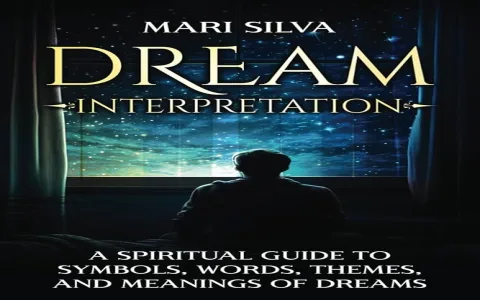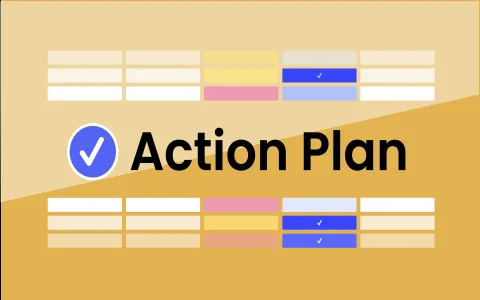Man, let me tell you, I didn’t just wake up one morning and decide to throw together a list of the best dream interpretation sites for fun. That’s just not how I operate. I got dragged into this whole “Dream Interpretation Challenge” business kicking and screaming.
It all started with the dog, frankly. My old mutt, Rusty, finally checked out a few months back. I was a mess, obviously, but what really spun me was the crazy dreams that kicked off right after. Not just sad dreams, but the same one, over and over. I’d be in this huge, empty house, and there would be this one thick, dark red door. I’d be fumbling for the key, and every time, the key would snap in half just as I was about to turn the lock. Every single night. It sounds ridiculous when I type it out, but it started turning me into a daytime zombie. I’d wake up in a cold sweat, heart pounding, totally exhausted before the coffee even dripped.
My wife, bless her heart, finally just threw her hands up and told me to look it up. “Get it out of your head so you can sleep, or I’m moving to the couch,” she said. Fair enough. I was ready to try anything.

The Messy Start: Kicking Over Rocks
I fired up the desktop and just hammered the first few things that came to mind: “locked red door dream meaning,” “snapped key symbolism.” The results? A total disaster. I waded through pages of useless, glossy garbage. One site told me I had a past-life trauma involving a medieval castle. Another wanted $19.99 for a personalized “Dream Decoder” PDF. I slammed the laptop shut after two hours. I felt worse than when I started.
See, my problem wasn’t the lack of information; it was the sheer volume of untested nonsense. I realized I was just searching like a scared amateur, looking for an easy answer. That’s when I shifted gears. I treated it like a proper work project, not a midnight fear.
I started a new search strategy. I ignored anything that looked like it was designed in the last five years. I focused my energy on finding resources used by actual therapists or researchers—the boring, text-heavy stuff. I had to dig deep, way past the first page of Google, into the forums and the academic archives that nobody bothers linking to.
I kept a running spreadsheet—yeah, a spreadsheet for dream stuff—and for every site, I ran the same three test dreams through it: the Red Door, a friend flying, and a car losing its brakes. I compared the tone, the jargon (or lack thereof), and the consistency of the answers. If a site gave me three totally different answers to the same simple question on three different days, it immediately got tossed in the trash.
The Grind: Vetting and Validation
This process took me about two weeks of dedicated, annoying research after the workday was done. I poured over the ‘About Us’ pages, trying to figure out if the advice was coming from someone who studied something real, or just a guy who read a book on Jung one time. I went through dozens of blogs and resource lists compiled by actual psychologists, not just marketers.
What I kept seeing pop up again and again were these certain bedrock resources—the places that didn’t promise instant solutions, but gave you a framework to figure out your own stuff. The sites that felt like they were written by someone who was trying to help you understand, not just sell you a magic bullet.
I distilled all that rough work down to the five spots that consistently gave me a thoughtful, grounded context for my crazy Red Door problem. They didn’t solve the dream, but they showed me what the dream was pointing at: feeling locked out of a closure moment with Rusty. That small shift in perspective was huge.
Here’s the thing about this challenge: nobody else is going to do the heavy lifting for you. You’ve got to wrestle the snake oil out of the way to find the real tools. My list is just the byproduct of that wrestling match. I fought for this information because my sleep—and my wife’s sanity—depended on it.
So, here are the five places that I cemented as my go-to spots after all that digging and testing. They are not magic, but they are honest.
My Hard-Won List: The Top 5 Results
- Resource One: The Archive Site. I found this place that just compiled simple, basic symbolism based on old, published texts. It’s clunky to look at, but it gives you a solid baseline definition without the fluff.
- Resource Two: The Educational Hub. This one is actually run by a university research group, or at least it looks like it. It’s light on interpretation but heavy on the science of sleep and the brain. It makes you think about why you dream, not just what the dream means.
- Resource Three: The Symbol Dictionary. This isn’t a quick fix, but it’s massive. It let me cross-reference the ‘snapped key’ with ‘door’ with ‘red’ to build my own hypothesis instead of just reading someone else’s guess.
- Resource Four: The Forum for Clinicians (Non-Pro Access). I had to really search for this one. It’s a place where therapists sometimes talk shop. I didn’t post anything, but just reading their discussions on common themes was like getting a free, slightly rough education. It helped me frame the problem in a more adult way.
- Resource Five: The Historical Overview. This site just walks you through the history of dream analysis from ancient times to Freud and beyond. It doesn’t tell you what your dream means, but it shows you all the different lenses you can use. I found this super useful for deciding which approach felt less like total B.S.
I finally got a handle on the whole situation. The dreams still happen sometimes, but now I know where to look, and more importantly, I know what to ignore. That whole challenge wasn’t about finding the answer to the red door; it was about building a system to handle the noise. That’s why I’m sharing this now. Save yourself two weeks of frustration. I already did the painful part for you.













